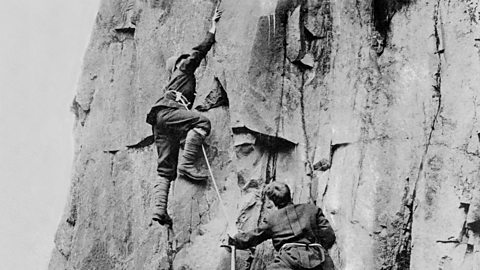Rock climbing - an overview and history of the sport
Overview
Climbing has many different disciplines and can be categorised into four main areas:
- mountain climbing
- ice climbing
- bouldering
- rock climbing
Although these are all different activities, they have a common theme of utilising the sustained use of hands and legs to support the climber's balance and weight.
Success in rock climbing is achieved by reaching a particular summit or the endpoint of a pre-defined route without falling. In professional rock climbing competitions, participants are tested on the speed they complete a climbing route in or by achieving the farthest point on an increasingly difficult route.
Although climbing is considered an extreme sport, it still requires all of the same physical attributes of mainstream sports. However, the different challenges, excitement and adrenaline rush are the factors that make it so popular.
For safety reasons, participants cannot commence climbing unless they have received training from a qualified trainer, have a good understanding of the correct climbing techniques and use the specialised climbing equipment necessary for the task.
History
The exact origins of rock climbing, like many sports, are unclear. Although rock climbing was an important part of Victorian mountaineering in the Alps, it is generally believed that it was a recreational activity in France, Italy and England at the end of the 19th century. Rock climbing gradually developed and evolved from an alpine necessity to a specialised and athletic sport in its own right.

The popularity of climbing led to the creation of the world's first mountaineering club in 1857 called the Alpine Club. This club expanded their ideals of climbing internationally and led to fundamental changes in the equipment that helped revolutionise the sport. In 1910, German and Italian climbers developed a series of rope handling techniques, pitons and carabineers. These advanced technology changes led to impossible climbs becoming possible, and by the 1920s enabled mountaineering expeditions to set off to climbing venues throughout the world.
It was not until the 1950s that rock climbing moved from a recreational pastime to a sport in its own right. The same decade saw the first ever planned overnight climbs being completed.
Climbing competitions were first organised in the former USSR in the late 1940s. However, it was not until 1985 that an Italian sport journalist gathered a group of the best climbers for an event called SportRoccia. This was to be the first organised competition for the new era of modern sport climbing and in 1991, the first World Championship was organised in Frankfurt, Germany.

In 2011, the International Olympic Committee Executive Board included sport climbing on the shortlist (with seven other sports) as a possible new event for the 2020 Olympic Games. However, in this round it proved to be unsuccessful.